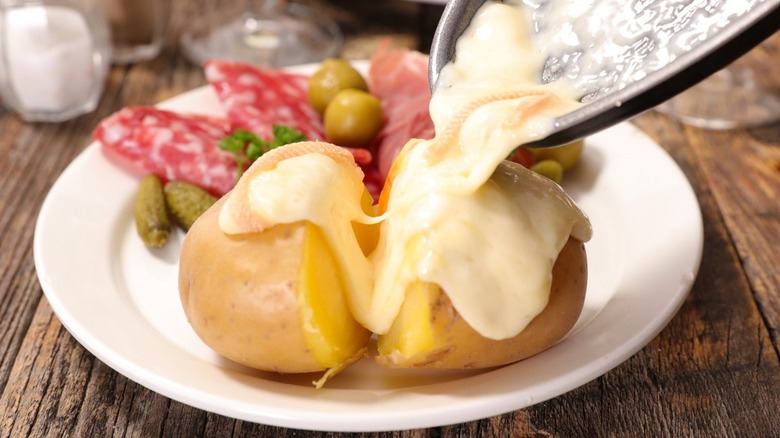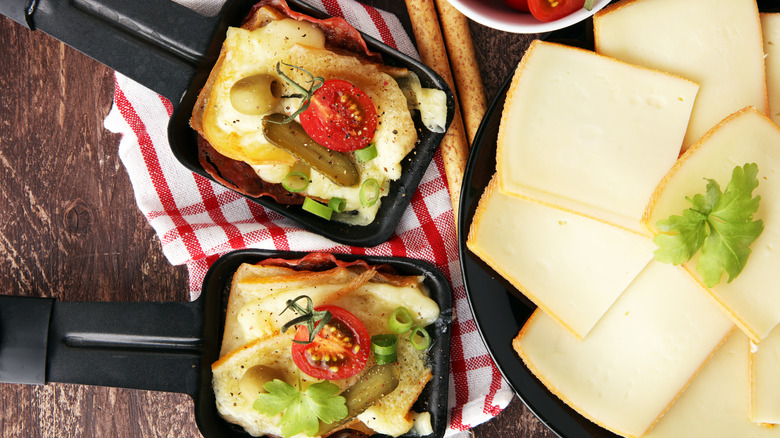This Traditional Swiss Christmas Eve Meal Is Filled With Cheesy Goodness
There are plenty of traditional Christmas dinner recipes from around the world: mince pie and ham in Great Britain, spiced beef in Ireland, massive fish spreads in Italy, and julbord in Sweden. There is, however, one particularly special nativity meal that resonates with the people of Switzerland — and it involves lots of cheese.
Raclette, a Swiss Christmas Eve staple, is an element of celebration that transcends mere sustenance, elevating the act of dining into a social and sensory ritual. Rooted in centuries of Alpine history, this delectable cheese has woven itself into the fabric of Swiss culture, offering a festive reprieve on December 24. The word raclette originates from the French term "racler," meaning "to scrape," hinting at the unique way in which the beautiful Swiss-born cheese is served. Folks across Europe even gather for raclette parties, during which hungry guests prepare their own cheesy plates.
The history of raclette can be traced back to Switzerland's mountainous regions, where shepherds and farmers sought sustenance in their land's produce. According to legend, these resourceful individuals discovered the magic of melting cheese over an open fire, creating a dish that not only fueled their bodies but also forged strong bonds among friends, neighbors, and family members, especially during Christmastime.
Raclette is a decadent, Swiss-born dish starring melted cheese
Crafted with meticulous care, raclette cheese is a semi-hard, aged cow's milk cheese. Serving raclette is a carefully orchestrated affair that involves specialized equipment like the raclette grill or melter. The cheese, typically presented in a half-wheel, is positioned before the heat source as its surface gradually melts into a gooey, sauce-like substance. As the cheese undergoes this metamorphosis, a savory aroma permeates the air — a prelude to the gastronomic symphony about to unfold.
The accompaniments play a crucial role in the raclette experience, enhancing the cheese's richness and providing a delightful contrast of flavors and textures. Raclette is traditionally used to smother boiled potatoes, bread, gherkins, pickled onions, cherry tomatoes, cured meats (namely salami and prosciutto), and other hearty bases, each element contributing to the culinary tapestry. It boasts an iconically pungent aroma, not to mention a distinctive flavor that's often described as nutty, milky, salty, and smoky, with subtle earthy undertones that pay homage to the pristine Alpine pastures where the cows graze.
While raclette has evolved from a humble Alpine custom to a longstanding Christmas Eve convention, its essence remains ingrained in the spirit of community and the adoration of simple, good food. Raclette has the power to create a sensory masterpiece that encapsulates the joy and warmth of the holiday season.

